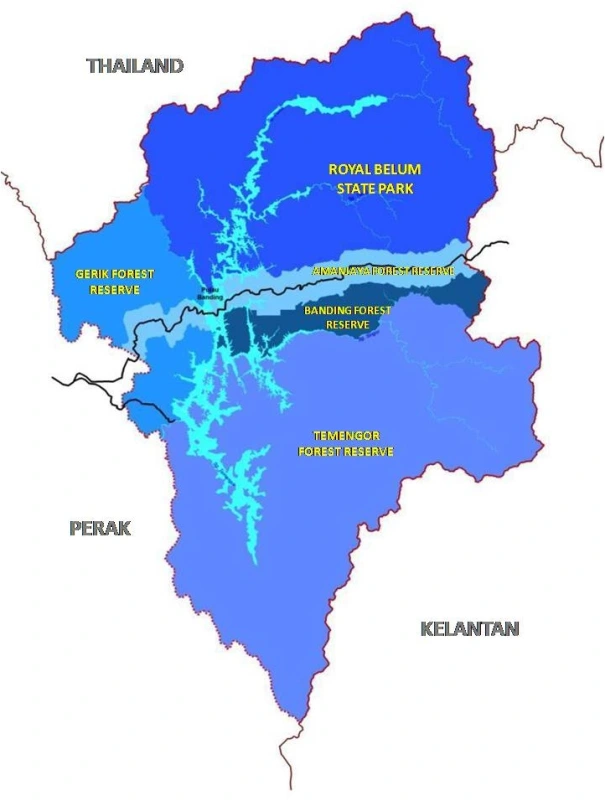MNS has advocated for the conservation of Belum-Temengor Forest Complex (or fondly called BT) since the 1990s where the Society organised two scientific and heritage expeditions into Sungai Halong (in Temengor) and Sungai Tan-Hain (in Royal Belum). The expeditions where first of its kind in Malaysia and later such actions were adopted by other government agencies in various states. The BT expeditions resulted in confirming the site’s natural (and national) heritage value thus in need of protection and conservation attention. Globally, it is also recognised as one of Malaysia’s 55 Important Bird and Biodiversity Areas (IBA).
Post-expedition period, MNS has been involved in further advocacy work in securing proper protection status for BT. In the mid-noughties, MNS and her allies mounted a campaign to call for BT’s protection which resulted in the partial protection of the forest complex i.e. gazettement of the Royal Belum State Park (117,500 ha) in 2007.
BT is undoubtedly northern Peninsular Malaysia’s “natural jewels”, the only remaining contiguous block to tropical rainforests linking southern Thailand (Bang Lang National Park/Hala-Bala Wildlife Sanctuary) and parts of the Titiwangsa Range. This large forest complex, about 320,000 ha, consists of several different blocks that are administered by two main State government namely Perak State Parks Corporation and Forestry Department.; the Royal Belum State Park and Gerik, Temengor, Banding and Amanjaya Forest Reserves (see the map below)

The tropical rainforests of BT are reputed to be older than those in the Congo (Africa) and Amazon (South America). BT supports an amazing array of biodiversity rivaling, or not surpassing, Taman Negara National Park. Past scientific expeditions into BT have uncovered various new findings (some even to science), country records, endemic plants and fauna and geological wonders. BT, however, is also known to support large populations of Malaysia’s mammals such as the Malayan tiger, Asian elephant, primates and Malayan Tapir. BT also fulfils the needs of all 10 hornbill species found in Malaysia. It is one of the two sites in this country that all 10 species can be seen in a single location.
Copyright © Malaysian Nature Society (MNS) - Persatuan Pencinta Alam Malaysia 2025
Adding {{itemName}} to cart
Added {{itemName}} to cart